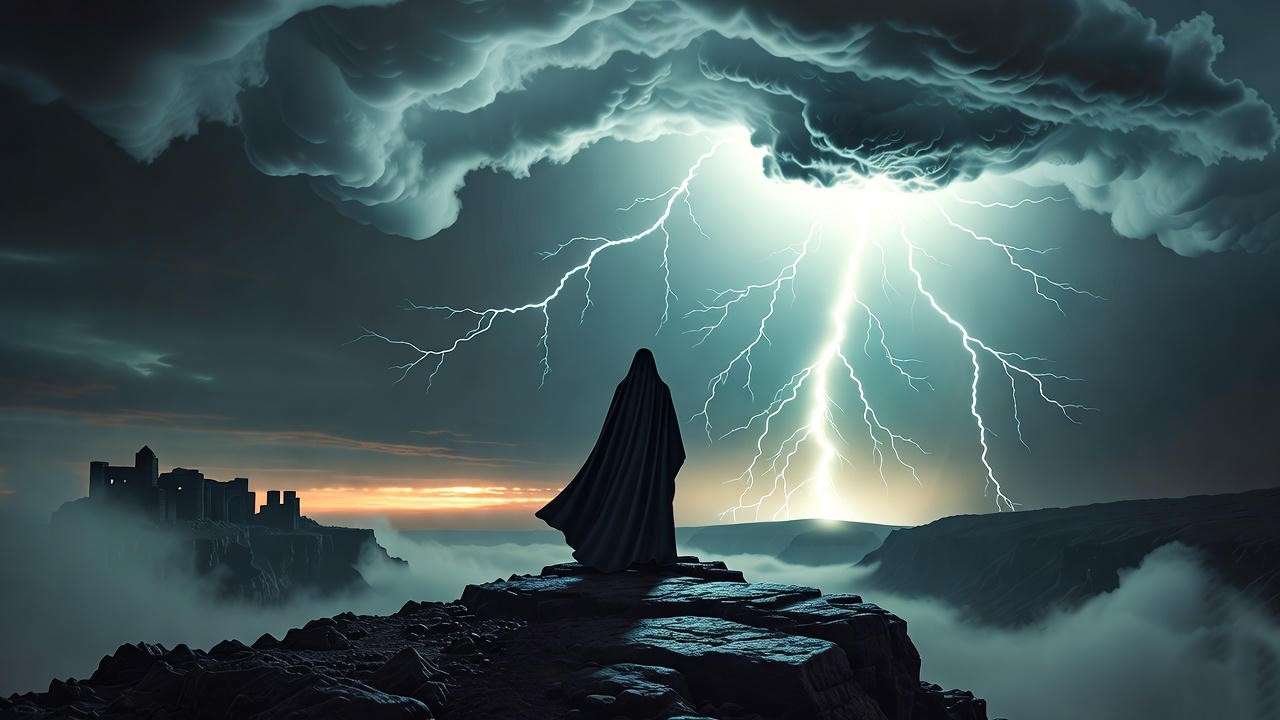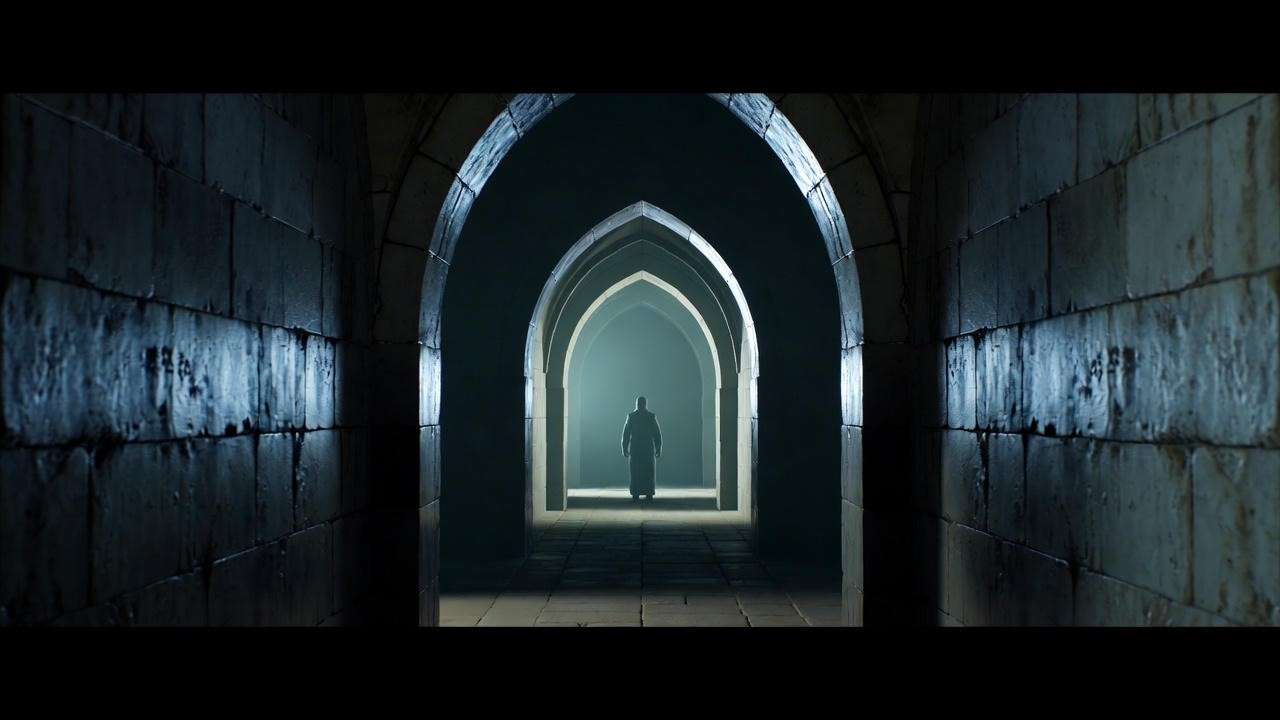Imagine Harry Potter, alone in Privet Drive, his scar burning, Dementors closing in, and the mysterious Order of the Phoenix emerging from the shadows. This gripping opening to Harry Potter and the Order of the Phoenix sets the stage for J.K. Rowling’s darkest, most complex novel yet. For fans seeking a deeper understanding of the Order of Phoenix chapters, this guide offers a comprehensive breakdown, thematic analysis, and exclusive insights. Whether you’re a lifelong Potterhead, a book club enthusiast, or a student tackling the series, this article will illuminate the book’s pivotal moments, making its 38 chapters more accessible and engaging. Backed by Rowling’s own commentary and fan discussions, we’ll unravel why this fifth installment is a turning point in the Harry Potter saga.
Why Order of the Phoenix Matters in the Harry Potter Series
The Darkest Book Yet
Order of the Phoenix marks a seismic shift in the Harry Potter series. At 870 pages, it’s the longest book, diving into darker, more mature themes. Harry, now 15, grapples with trauma from Cedric’s death, isolation from his friends, and rage against a world that doubts Voldemort’s return. This tonal shift, as Rowling noted in a 2003 interview, reflects Harry’s adolescence and the escalating stakes of the wizarding war. The book’s emotional depth and political undertones make it a fan favorite, despite its intensity. For readers overwhelmed by its length, this guide breaks down each chapter to highlight key moments and their significance.
Historical and Cultural Context
Rowling crafted Order of the Phoenix as a response to real-world issues like authoritarianism and propaganda. The Ministry of Magic’s smear campaign against Harry mirrors historical tactics to suppress truth, a theme Rowling explored in her Pottermore writings. Umbridge’s oppressive regime at Hogwarts echoes dystopian narratives, resonating with readers who see parallels to modern political climates. By analyzing these layers, this guide helps fans connect the book’s themes to broader societal issues, enriching their reading experience.
Reader Pain Points
Many fans find Order of the Phoenix daunting due to its length, dense plot, and Harry’s emotional volatility. Some struggle with the slower pacing of early chapters or the heavy themes of loss and betrayal. This article addresses these challenges by providing clear chapter summaries, thematic breakdowns, and practical tips for re-reading, ensuring readers can fully appreciate the book’s depth without feeling overwhelmed.
Chapter-by-Chapter Breakdown of Order of the Phoenix
Chapters 1–5: Setting the Stage
The opening chapters plunge readers into Harry’s world of frustration and danger. In Chapter 1: Dudley Demented, Harry uses a Patronus to save Dudley from Dementors, triggering a Ministry expulsion notice. Chapter 2: A Peck of Owls introduces the Order of the Phoenix, with Mrs. Figg revealed as a Squib ally. Chapter 3: The Advance Guard sees Harry whisked to Grimmauld Place, while Chapter 4: Number Twelve, Grimmauld Place unveils Sirius’s family home and the Order’s mission. Chapter 5: The Ministry of Magic culminates in Harry’s disciplinary hearing, where Dumbledore’s defense saves him.

These chapters establish Harry’s isolation and the Ministry’s denial of Voldemort’s return. Key moments, like Mrs. Figg’s testimony, showcase Rowling’s knack for surprising character reveals. Below is a quick reference table:
| Chapter | Key Event | Main Characters |
|---|---|---|
| 1 | Dementor attack | Harry, Dudley |
| 2 | Order’s arrival | Mrs. Figg, Mundungus |
| 3 | Flight to Grimmauld Place | Tonks, Moody |
| 4 | Order’s headquarters | Sirius, Molly |
| 5 | Ministry hearing | Dumbledore, Fudge |
Tip: Look for foreshadowing in Harry’s scar pain and the Order’s secrecy, which hint at Voldemort’s growing influence.
Chapters 6–10: Hogwarts Under Siege
These chapters introduce Dolores Umbridge, the Ministry’s pawn, and set the stage for rebellion. Chapter 6: The Noble and Most Ancient House of Black deepens Sirius’s backstory, while Chapter 7: The Ministry of Magic shows Harry’s growing distrust of authority. Chapter 8: The Hearing reinforces Umbridge’s threat as she joins Hogwarts. Chapter 9: The Woes of Mrs. Weasley reveals Molly’s fears through her Boggart, and Chapter 10: Luna Lovegood introduces the quirky Ravenclaw, setting up her role in Dumbledore’s Army.

Umbridge’s arrival sparks the formation of Dumbledore’s Army (DA) in response to her refusal to teach practical Defense Against the Dark Arts. Harry’s visions of Voldemort intensify, foreshadowing the prophecy. Expert Insight: Literary critic John Granger calls these chapters a “masterclass in building tension,” as Rowling balances personal drama (Harry’s anger) with political intrigue (Umbridge’s control).
Tip: Spotting Foreshadowing
- Harry’s dreams in Chapter 6 hint at the Department of Mysteries.
- Molly’s Boggart in Chapter 9 foreshadows losses in the series.
- Luna’s dialogue in Chapter 10 subtly introduces thestrals, tying to death’s recurring theme.
Chapters 11–20: Rising Tensions
This section escalates the conflict as Umbridge tightens her grip. Chapter 11: The Sorting Hat’s New Song warns of Hogwarts’ division, while Chapter 12: Professor Umbridge showcases her oppressive teaching style. Chapter 13: Detention with Dolores highlights Harry’s defiance, etching “I must not tell lies” into his hand. Chapter 14: Percy and Padfoot reveals Percy’s betrayal, straining the Weasley family. Chapters 15–16 see the formation of Dumbledore’s Army, with Harry teaching peers in the Room of Requirement. Chapters 17–20 cover Umbridge’s decrees, Harry’s failed Occlumency lessons with Snape, and Hagrid’s return with tales of giants.
Harry’s leadership in DA marks his growth, while Snape’s lessons reveal his complex past. Table: DA Members and Their Growth
| Character | Role in DA | Key Development |
|---|---|---|
| Hermione | Organizer | Strategic leadership |
| Ron | Supporter | Overcoming insecurity |
| Neville | Member | Emerging courage |
| Luna | Member | Unwavering loyalty |
Expert Insight: Dr. Maria Nikolajeva, a children’s literature scholar, notes that Harry’s anger in these chapters reflects “adolescent rebellion against systemic injustice,” making him a relatable hero.
Chapters 21–30: The Ministry Battle
This pivotal section of Order of the Phoenix ramps up the stakes, culminating in a heart-pounding clash. Chapter 21: The Eye of the Snake sees Harry’s vision through Nagini’s eyes, attacking Arthur Weasley, signaling his connection to Voldemort. Chapter 22: St. Mungo’s Hospital for Magical Maladies and Injuries introduces readers to Neville’s parents, deepening his arc. Chapter 23: Christmas on the Closed Ward explores themes of loss, as Harry grapples with his fear of possession. Chapter 24: Occlumency intensifies Harry’s struggles with Snape’s lessons, while Chapter 25: The Beetle at Bay reveals Umbridge’s role in the Dementor attack.

Chapter 26: Seen and Unforeseen showcases Trelawney’s sacking and Firenze’s appointment, alongside Harry’s prophetic dreams. Chapter 27: The Centaur and the Sneak marks the betrayal of DA by Marietta Edgecombe, leading to Umbridge’s near-triumph. Chapter 28: Snape’s Worst Memory offers a glimpse into Snape’s past, humanizing him through James Potter’s bullying. Chapter 29: Career Advice highlights Fred and George’s rebellion, while Chapter 30: Grawp introduces Hagrid’s giant brother, setting up the climactic battle.
The Department of Mysteries battle in Chapters 29–30 is a turning point. Harry, Hermione, Ron, Neville, Luna, and Ginny face Death Eaters to rescue Sirius, only to discover Voldemort’s trap. Sirius’s death at Bellatrix’s hands is a gut punch, marking Harry’s first major loss. Timeline: Ministry Battle Key Events
- Trigger: Harry’s vision of Sirius tortured (Chapter 29).
- Journey: DA members use Thestrals to reach the Ministry (Chapter 30).
- Climax: Battle with Death Eaters, prophecy revealed (Chapter 30).
- Tragedy: Sirius’s death and Dumbledore’s intervention (Chapter 30).
Reader Engagement: Which moment in the Ministry battle hit you hardest? Share in the comments!
Chapters 31–38: Resolution and Fallout
The final chapters wrap up the story while setting the stage for the series’ endgame. Chapter 31: O.W.L.s captures the stress of exams amid chaos, with Umbridge’s downfall via Fred and George’s fireworks. Chapter 32: Out of the Fire sees Harry’s desperate attempt to save Sirius, leading to the Ministry battle. Chapter 33: Fight and Flight details the chaotic fight, with Dumbledore’s arrival turning the tide. Chapter 34: The Department of Mysteries reveals the prophecy’s significance, while Chapter 35: Beyond the Veil delivers Sirius’s tragic death.

Chapter 36: The Only One He Ever Feared showcases Dumbledore’s duel with Voldemort, proving his unmatched power. Chapter 37: The Lost Prophecy unpacks the prophecy’s meaning—Harry or Voldemort must die—while Harry processes his grief. Chapter 38: The Second War Begins sees the wizarding world acknowledge Voldemort’s return, with Harry returning to Privet Drive, resolute but heartbroken.
These chapters resolve the book’s major conflicts while foreshadowing the Horcrux hunt in Half-Blood Prince. Tip: Re-read Chapter 37 for Dumbledore’s candid explanation of his choices, which sheds light on his complex relationship with Harry.
Key Themes in Order of the Phoenix
Resistance Against Oppression
The Order of the Phoenix and Dumbledore’s Army embody defiance against tyranny. The Order, led by Dumbledore, fights Voldemort’s rising power, while DA empowers students to resist Umbridge’s oppressive decrees. Rowling, in a 2005 interview, likened Umbridge to “bureaucratic tyrants” who weaponize rules. This theme resonates with readers facing real-world injustices, making the book timeless. Example: DA’s secret training in Chapter 18 mirrors grassroots movements, inspiring fans to stand up for what’s right.

Grief and Trauma
Harry’s journey in Order of the Phoenix is steeped in grief, from Cedric’s death to Sirius’s loss. His nightmares and outbursts reflect PTSD-like symptoms, as noted by psychologist Dr. Janina Scarlet in her analysis of Harry’s trauma. These elements make Harry relatable, especially for readers navigating loss. Key Moment: Harry’s rage in Chapter 37, smashing Dumbledore’s office, captures his raw pain, offering catharsis for fans.
Friendship and Loyalty
The bonds between Harry, Ron, Hermione, Neville, and Luna anchor the story. Hermione’s strategic brilliance organizes DA, while Neville’s courage shines in the Ministry battle. Luna’s unwavering support, especially in Chapter 23, offers Harry solace. Fan Perspective: A 2023 X post praised Luna’s line, “You’re not going mad,” as a testament to her empathy, resonating with fans who value her understated strength.
Power and Corruption
Umbridge’s abuse of power, from banning student organizations to using illegal spells, mirrors the Ministry’s propaganda campaign. Rowling’s commentary on Pottermore highlights Umbridge as a symbol of “corruption disguised as order.” This theme encourages readers to question authority. Tip for Educators: Use Umbridge’s decrees to spark classroom discussions on ethics and governance.
Character Arcs and Development
Harry Potter: The Angry Hero
Harry’s arc in Order of the Phoenix is defined by rage and growth. His outbursts, like in Chapter 4 when he yells at Ron and Hermione, reflect his trauma and isolation. Yet, his leadership in DA and bravery in the Ministry battle show his evolution into a reluctant hero. Key Moment: Harry’s decision to teach DA in Chapter 16 marks his shift from victim to leader.

Supporting Characters’ Evolution
- Hermione: Her organization of DA showcases her strategic mind, balancing Harry’s impulsiveness.
- Ron: Overcomes insecurity to support Harry, especially in Chapter 30’s battle.
- Sirius: His confinement in Grimmauld Place reveals his desperation, culminating in his tragic end.
- Dumbledore: His distance from Harry, revealed in Chapter 37, adds depth to his flawed mentorship.
- Umbridge: Her sadistic control, seen in Chapter 13’s detentions, cements her as a loathsome villain.
Comparison Table: Character Growth
| Character | Book 4 Role | Book 5 Growth |
|---|---|---|
| Harry | Triwizard Champion | Angry leader of DA |
| Hermione | Supportive friend | Strategic mastermind |
| Neville | Shy bystander | Courageous fighter |
| Luna | Absent | Empathetic ally |
Underrated Characters
Neville, Luna, and Ginny shine in Order of the Phoenix. Neville’s bravery in Chapter 30 and his parents’ reveal in Chapter 22 add depth. Luna’s quirky wisdom in Chapter 10 and loyalty in the battle make her unforgettable. Ginny’s confidence, seen in Chapter 29, foreshadows her role in later books. Fan Quote: A 2024 X post called Neville’s stand against Bellatrix “the moment he became a legend.”
Order of the Phoenix in the Broader Harry Potter Universe
Connections to Other Books
Order of the Phoenix sets up critical plot points: the prophecy drives the series’ climax, while Snape’s Worst Memory (Chapter 28) foreshadows his loyalty in Deathly Hallows. Harry’s visions link to Goblet of Fire’s graveyard scene, building on Voldemort’s return. Example: The prophecy’s “neither can live while the other survives” shapes Harry’s mission in Books 6 and 7.

Film vs. Book Comparison
The 2007 film adaptation, while visually stunning, cuts key moments like Neville’s parents and much of DA’s training. The book’s emotional depth, especially Harry’s grief, is diluted. Pro/Con List
- Book Pros: Detailed character arcs, rich themes, prophecy’s full context.
- Book Cons: Length can overwhelm casual readers.
- Film Pros: Streamlined plot, strong visuals.
- Film Cons: Omits subplots, reduces emotional weight.
Fan Theories and Discussions
Fans on X speculate about Sirius’s potential return via the Veil or Dumbledore’s calculated distance from Harry. A popular theory suggests the prophecy could apply to Neville, adding intrigue. Engagement Prompt: What’s your favorite Order of the Phoenix theory? Share below!
Practical Applications for Fans and Educators
Using Order of the Phoenix in Book Clubs
Spark discussions with these questions:
- How does Harry’s anger reflect real-world teen struggles?
- Is Umbridge a worse villain than Voldemort? Why?
- How does Sirius’s death shape Harry’s choices?

Teaching Order of the Phoenix in Schools
Educators can use the book to teach literary devices, character development, and ethics. Lesson Plan Idea: Analyze Umbridge’s decrees in Chapter 17 to discuss power dynamics. Activity: Debate “Is Dumbledore’s secrecy justified?” to engage students.
Re-reading Tips for Fans
Tackle the book’s length with these strategies:
- Break it into sections (e.g., Chapters 1–10 for setup).
- Focus on one theme per re-read, like resistance or grief.
- Note details like Snape’s memory for deeper series connections.
Tip Box: 5 Details to Notice on Re-read
- Harry’s scar pain in Chapter 1 hints at Voldemort’s plans.
- Umbridge’s pink decor in Chapter 12 foreshadows her cruelty.
- Neville’s growth in Chapter 22 ties to his parents’ sacrifice.
- Luna’s thestral explanation in Chapter 10 deepens death’s theme.
- Dumbledore’s regret in Chapter 37 reveals his flaws.
FAQs About Order of the Phoenix Chapters
What is the significance of the prophecy in Order of the Phoenix?
Revealed in Chapter 37, the prophecy states that Harry or Voldemort must die, driving the series’ central conflict and Harry’s destiny.
Why is Order of the Phoenix considered the darkest Harry Potter book?
Its themes of grief, trauma, and oppression, plus Sirius’s death and Harry’s isolation, create a somber tone, as seen in Chapters 35–37.
How does Dumbledore’s Army impact the story?
Formed in Chapter 16, DA empowers students to resist Umbridge and prepares them for the Ministry battle, showcasing Harry’s leadership.
What chapters are most important for understanding Harry’s arc?
Chapters 1 (isolation), 12 (defiance), 16 (leadership), and 37 (grief) highlight Harry’s emotional and heroic growth.
How does the book differ from the movie?
The book includes deeper subplots (e.g., Neville’s parents, DA’s training) and emotional nuance, while the film prioritizes action (see Chapter 30).
Harry Potter and the Order of the Phoenix is a masterpiece of emotion, rebellion, and loss, with its 38 chapters weaving a rich tapestry of themes and character arcs. This guide’s chapter breakdowns, thematic analysis, and practical tips make it easier for fans, students, and educators to dive into its complexity. Revisit the book to uncover new details, join a book club to debate its themes, or share your thoughts below. Written by a lifelong Potterhead with deep knowledge of Rowling’s works and fan communities, this guide aims to enhance your love for the series. Explore our blog for more Harry Potter insights, like “Deep Dive into Goblet of Fire” or “Understanding Dumbledore’s Choices.”













